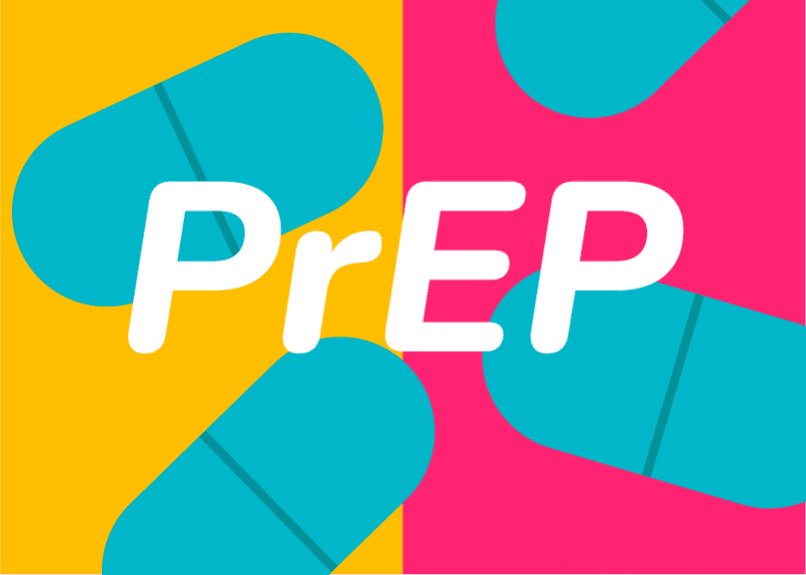
Pre-exposure prophylaxis, more commonly known as "PrEP," is a medical treatment that can help prevent HIV (human immunodeficiency virus) infection. Providing access to PrEP for at-risk populations is an important part of the overall effort to reduce the spread of HIV globally. In this blog post, we will take a look at what PrEP is, how it works, its benefits and risks, how to take PrEP, and also discuss PrEP’s availability in Sweden.
The PrEP medication that is most commonly prescribed is a combination of two antiretroviral drugs called, tenofovir and emtricitabine, which are taken in tablet form. PrEP can be taken daily or as needed according to a specific dosing schedule often called "on-demand" or "2-1-1". PrEP works by blocking the HIV virus's ability to infect and replicate in the body by stopping an important enzyme that HIV needs to replicate. Maintaining a steady level of PrEP medication in the blood, it can prevent a potential infection if one is exposed to a risk of infection. Although PrEP is not 100% effective, it can significantly reduce the risk of getting HIV when taken regularly and correctly.
Sometimes people taking PrEP may experience side effects such as nausea, headache, fatigue, or weight loss. These side effects are usually mild and tend to pass after a week or so. In rarer cases, PrEP can cause more serious complications such as decreased bone density or kidney problems. It is important for people taking PrEP to have regular follow-up visits with their doctor to detect any problems and to test for sexually transmitted infections. It is also important to remember that PrEP does not provide any protection against other sexually transmitted infections. Therefore, it is important to continue using condoms and practicing safe sex to reduce the risk of contracting other STIs. People using PrEP are usually called for follow-up visits and testing every three months.
Sweden has been much slower to implement PrEP in its HIV strategy than many other Western countries. Fortunately, PrEP is now approved in Sweden and is even covered by high-cost protection. But despite this, it is not always easy to access treatment and there are long waiting times in many regions. PrEP is usually prescribed at regional sexual health/STD clinics. The easiest way to find your nearest clinic is to check 1177.se or call Vårdguiden on 1177. In Sweden, the Public Health Agency advocates the use of PrEP for individuals who are at significantly increased risk of HIV infection. According to the agency, PrEP is particularly useful for men who have sex with men and who have recently had a sexually transmitted disease, participated in chemsex, or have sold sex. PrEP can also be effective for those who are sexually active with many partners and do not regularly use condoms, couples where one partner is HIV-positive, and sex workers who often face a higher risk of HIV infection.
There are two ways to take PrEP: daily dosing and "on-demand." In this article, we will go through the two different ways of taking PrEP and what you need to know about each method.
Taking PrEP every day is the method with the best-documented effect and the dosing schedule that is primarily recommended. This means taking one tablet every day, at roughly the same time. Many choose to use daily alarms to remember to take their tablet. If a dose is missed, the missed tablet should be taken as soon as possible. If it is almost time for the next dose, the missed dose should be skipped and the usual dosing schedule should continue. One should not take a double dose of PrEP pills to compensate for a missed dose. Missing a dose once does not have a significant impact on protection, but if doses are missed frequently, there is a greater risk of HIV infection. If one often forgets to take their PrEP pill, it is important to talk to their healthcare provider for guidance.
'On Demand' is an alternative dosing schedule where PrEP is taken when needed. PrEP on demand works by taking 2 pills 2-24 hours before sex, 1 pill 24 hours after the first dose, and 1 pill 24 hours after the second dose.

If you have sex over several days, you should continue taking one tablet every 24 hours until you have taken two full daily doses (48 hours) after the last sexual contact.

If you plan to take PrEP on demand, it is usually recommended that you still start daily PrEP for the first few months. This is to see how the tablets are tolerated and to identify any problems or side effects at the first follow-up visit.
PrEP is an important tool for preventing the spread of HIV and protecting individuals from infection. By understanding how PrEP works, its potential side effects, who can benefit from it, and how to take it correctly, people can make informed decisions. For those who are at high risk of HIV infection, PrEP can offer important protection and provide security in their sex life. It is also important to remember that PrEP does not provide protection against other sexually transmitted infections. Therefore, it is important to continue using condoms and practicing safe sex even while on PrEP. Regular doctor visits and testing for sexually transmitted infections are also crucial to ensure that any problems or infections are detected and treated appropriately.
The product has been added to your cart